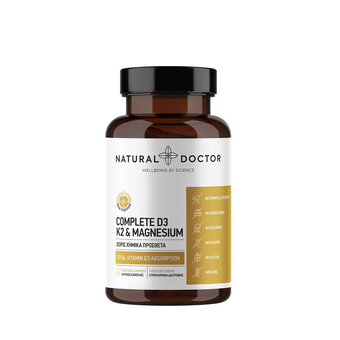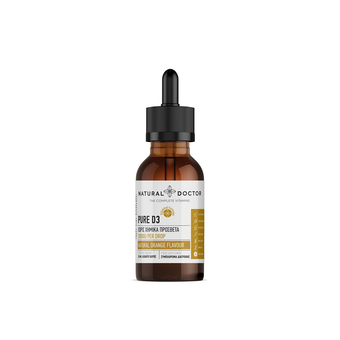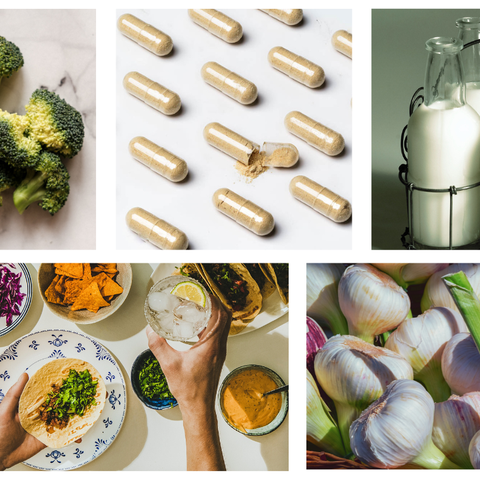Vitamin D, what are the symptoms that indicate a deficiency?

Vitamin D is a vitamin, which is produced in the skin mainly by exposure to the sun. Therefore even a perfectly balanced diet may not provide enough vitamin D3. To get enough vitamin D, we need to expose our skin to the sun daily, sunbathing for 15-20 minutes.
Sunbathing and vitamin D3
The sun is the ideal source for increasing vitamin D levels, but exposure for a few weeks during the summer months and especially during the holidays is not enough to maintain ideal levels throughout the year.
Although we live in a Mediterranean country with high sunshine, the levels of vitamin D3 in the Greeks are very low. In fact, they are lower than the similar levels of populations living in northern countries.
Exposure to the sun for 15-20 minutes during the summer months without sunscreen allows the skin to produce 10,000 - 20,000 units (IU) of vitamin D. However; this is not enough to make up for the lack of vitamin D as vitamin D needs to stay on the skin for more than 48 hours in order to be absorbed.
This happens because soaping in the shower after sunbathing flushes out most of the vitamin D the skin has produced.
The best sign for evaluating sunbathing time without sunscreen is when the skin begins to get a slightly rosy colour. Then we can apply sunscreen so as not to burn and not have the dangers that arise from excessive sun exposure.
Exposure time may vary from person to person. People with light skin need less sunbathing time, while people with dark skin need more time.
What affects vitamin D deficiency?
- Avoiding sun exposure and increased indoor stay time.
- Age, as the body's ability to produce vitamin D, decreases over time.
- Obesity.
- The colour of the skin, as dark skin reduces the synthesis of vitamin D.
- The use of sunscreen.
- The low content of vitamin D in food.
Avoiding sunbathing is just as dangerous as smoking. According to research published in the Journal of Internal Medicine, women who sunbathe live longer than those who avoid sun exposure, while avoiding the sun can be just as harmful as smoking.
According to scientists, the benefits of exposure to sunlight were greater as the hours of sun exposure increased. Scientists stress that women should avoid overexposure to the sun but draw our attention to the fact that reduced exposure to sunlight can ultimately do more harm than good to women's health in particular.
Suspicious symptoms of vitamin D deficiency
- Frequent colds and inflammation of the upper respiratory tract.
- Vitamin D levels below 20 units.
- Low back pain.
- Depression.
- Low bone density.
- Muscle and bone pain.
When do we have vitamin D deficiency, deficiency, or inadequacy?
- Lack: vitamin D3 levels below 20 in the blood (ng / mL).
- Deficiency: vitamin D3 levels below 30 units.
- Adequacy: levels above 30 units.
- Ideal: levels above 40-60 ng / mL throughout the year.
How much vitamin D should I take?
Supplementation dosage varies depending on age, skin colour, weight, health status, sun exposure, and other factors. As a precaution, according to Dr Tsoukalas, it is safe to take 5,000 IU daily for adults and 2,000 for children.
The best clinical results are achieved with a daily intake of vitamin D3 due to the constant supply to the body. Weekly or monthly intake provides reduced benefits compared to daily intake.
Achieving and maintaining ideal vitamin D levels often requires doses above 10,000 IU and is done through medical prescription and measurement of vitamin D levels at regular periods throughout the year.
Why do vitamin D levels not rise easily in the body?
Vitamin D needs two basic nutrients that work together in order to be activated in the body: vitamin K2 and magnesium. Taking D3 alone has limited effectiveness. Vitamin D supplements often do not contain vitamin K and magnesium, so supplementation is almost essential.
The complete formula of vitamin D with vitamin K and magnesium Complete D3, K2 & Magnesium is designed by clinical scientists to promote the optimal function of the body and to fully support the demanding requirements of daily nutrition.
Complete D3, K2 & Magnesium is free from chemical additives such as artificial colours, artificial flavours, titanium dioxide, milk, wheat, yeast, soy, corn, or genetically modified organisms.




